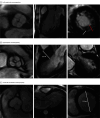Clinical Outcomes in Patients With Quadricuspid vs Bicuspid Aortic Valve
- PMID: 40758353
- PMCID: PMC12322796
- DOI: 10.1001/jamanetworkopen.2025.24915
Clinical Outcomes in Patients With Quadricuspid vs Bicuspid Aortic Valve
Abstract
Importance: Congenital aortic valve disease predominantly manifests as bicuspid aortic valve (BAV), while quadricuspid aortic valve (QAV) is considerably rarer. Whether outcomes vary between these 2 types of congenital aortic valve disease remains unknown.
Objective: To compare outcomes between patients with QAV and patients with BAV.
Design, setting, and participants: In this cohort study, patients diagnosed with QAV or BAV were retrospectively identified from echocardiographic examinations performed from January 1, 2011, to December 31, 2023, at 2 tertiary hospitals in China. Patients with QAV were propensity score matched 1:5 by age and sex with patients with BAV.
Exposure: Presence of QAV or BAV.
Main outcomes and measures: Outcomes of interest included aortic valve intervention (surgical or transcatheter), aortic surgery, aortic dissection, infective endocarditis (IE), heart failure hospitalization (HFH), and all-cause death. Morbidity rates were estimated using the cumulative incidence function to account for competing risk of death. Relative survival was calculated as the ratio of observed survival to the expected survival in the general population.
Results: From 2 945 132 echocardiographic examinations, 139 patients with QAV (median age, 54.8 [IQR, 46.2-63.9] years; 85 [61.2%] male) and 695 with BAV (median age, 55.4 [IQR, 45.5-64.2] years; 425 [61.2%] male) were included. Over a median follow-up of 4.8 years (IQR, 2.4-8.0 years), patients with QAV had a similar incidence of aortic valve intervention (77.4% [95% CI, 64.5%-86.1%] vs 75.7% [95% CI, 71.1%-79.8%]; P = .26) but lower incidence of aortic surgery (5.1% [95% CI, 0.9%-15.0%] vs 33.8% [95% CI, 28.4%-39.2%]; P < .001) and IE (not observed vs 9.6% [95% CI, 6.4%-13.5%]; P = .01) compared with patients with BAV. Aortic dissection was rare in both groups (QAV, 0.9% [95% CI, 0.1%-4.1%]; BAV, 3.6% [95% CI, 1.8%-6.4%]; P = .57). Compared with BAV, QAV morphology was associated with an increased risk of HFH after multivariable adjustments (adjusted hazard ratio [AHR], 2.52; 95% CI, 1.51-4.20; P < .001). Presence of cardiomyopathies was an independent factor associated with HFH in patients with QAV (AHR, 4.27; 95% CI, 2.26-8.07; P < .001). The 5-year relative survival rate compared with the age- and sex-matched general population was 102.9% (95% CI, 97.9%-107.2%) for patients with QAV and 102.4% (95% CI, 99.3%-104.8%) for those with BAV.
Conclusions and relevance: In this large, retrospective cohort study, both QAV and BAV were associated with a high risk of aortic valve intervention. Individuals with QAV had a greater risk of HFH, while those with BAV had higher incidence of IE and aortic surgery. Despite the substantial morbidity burden, survival in both groups was similar to that in the general population.
Conflict of interest statement
Figures


References
-
- Manuel AM, Ladeiras-Lopes R, Ribeiro J, et al. Prevalence, multimodality imaging characterization, and mid-term prognosis of quadricuspid aortic valves: an analysis of eight cases, based on 160 004 exams performed during 12 years in a tertiary care hospital. Eur Heart J Cardiovasc Imaging. 2021;22(7):765-776. doi: 10.1093/ehjci/jeaa355 - DOI - PubMed
Publication types
MeSH terms
LinkOut - more resources
Full Text Sources

